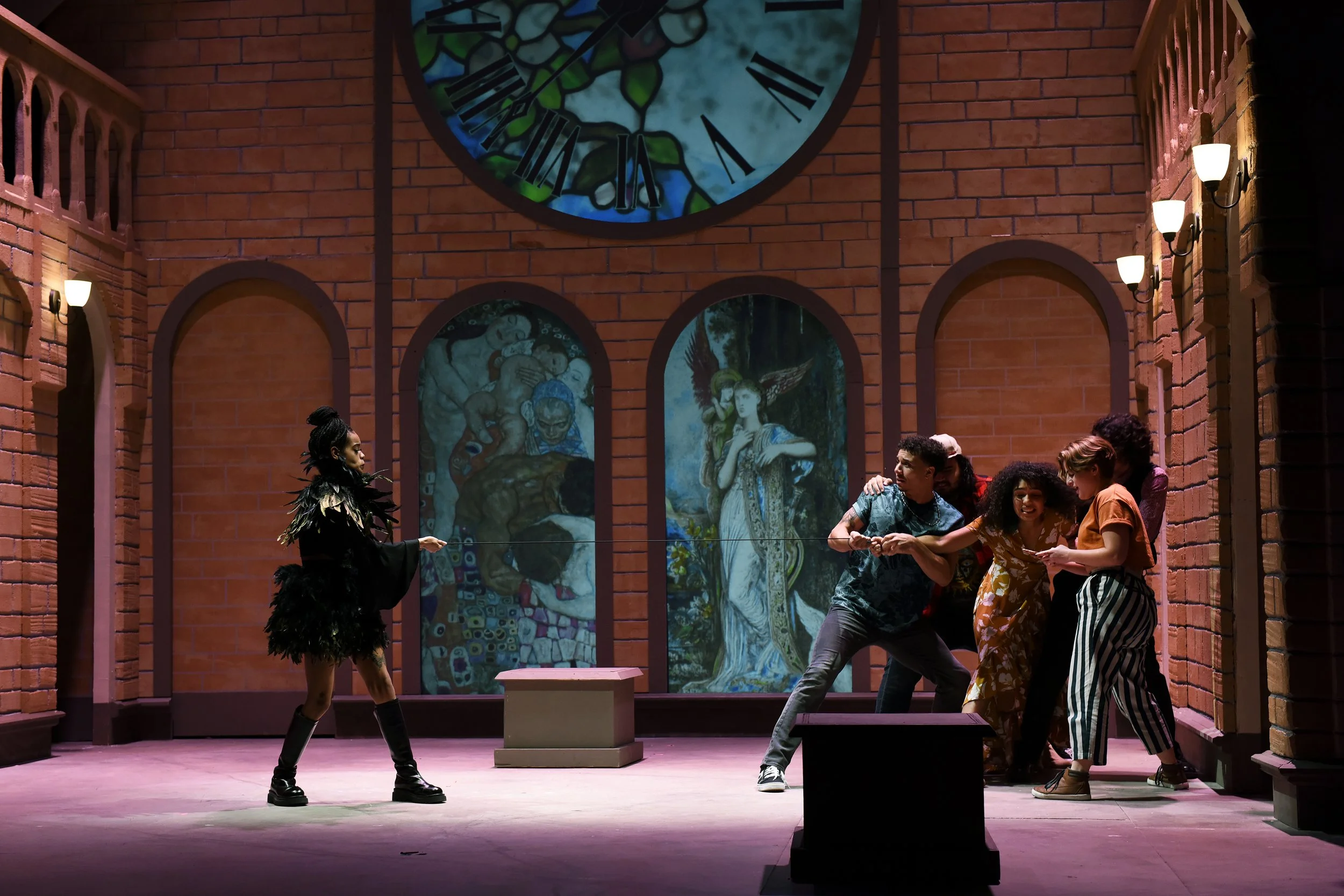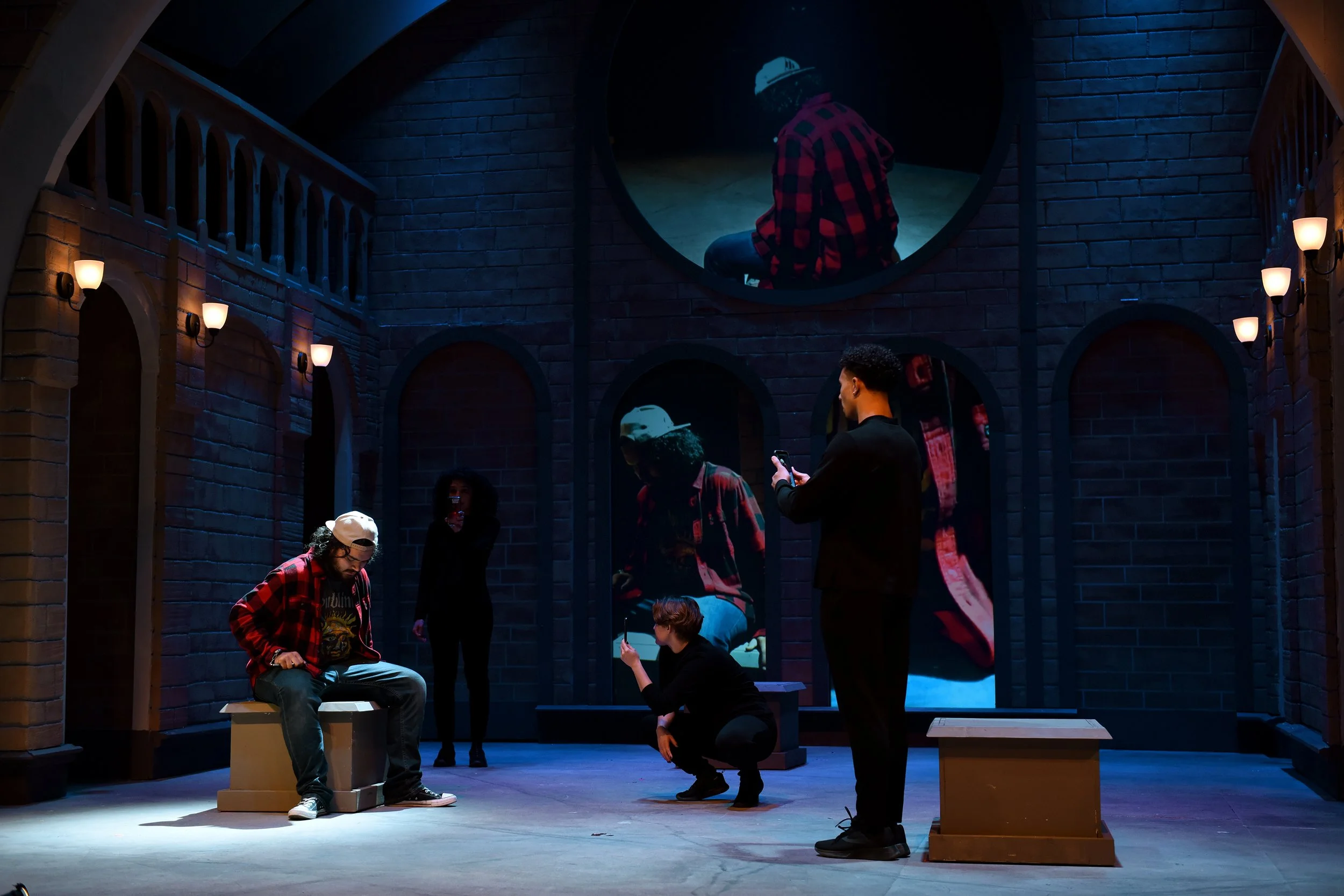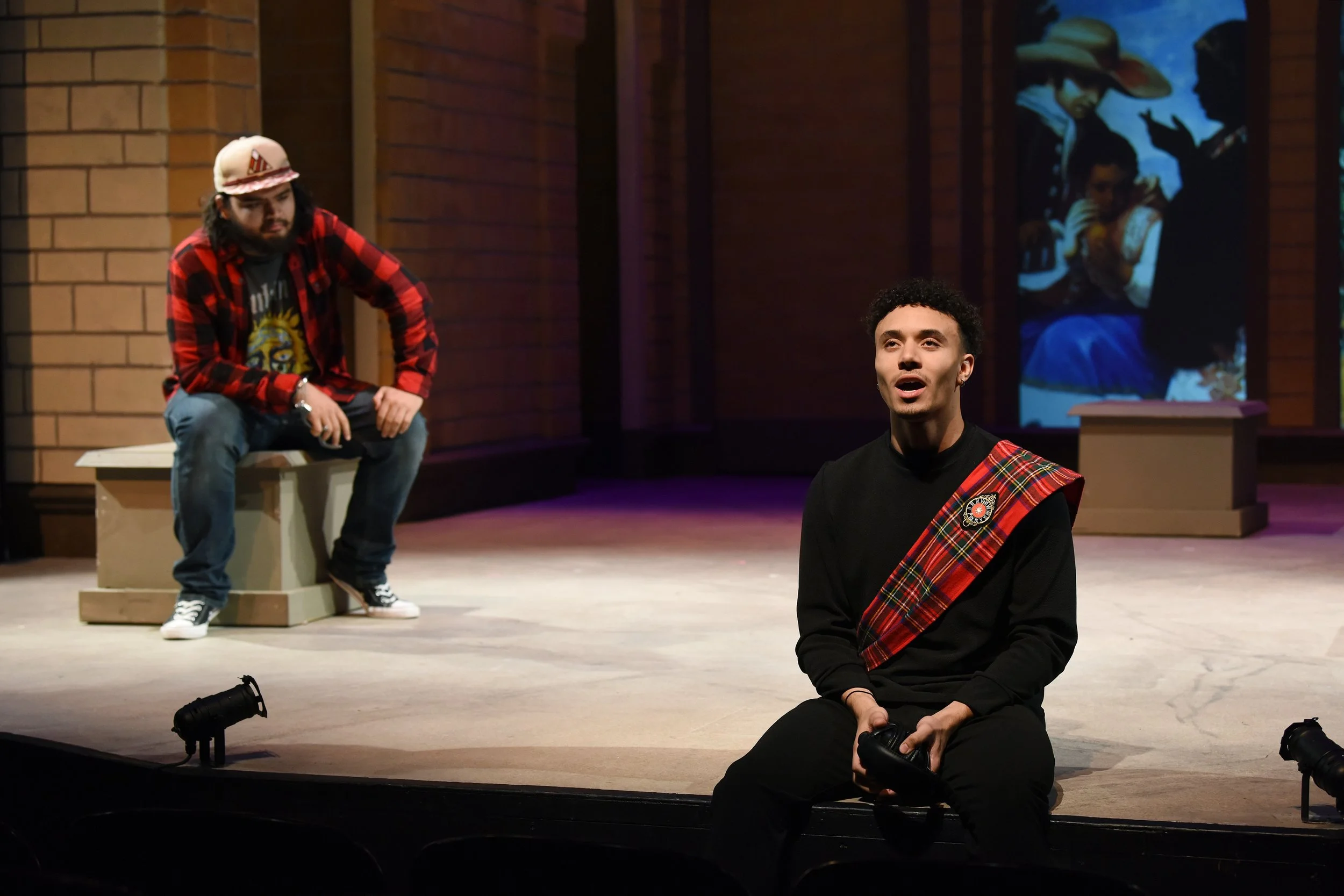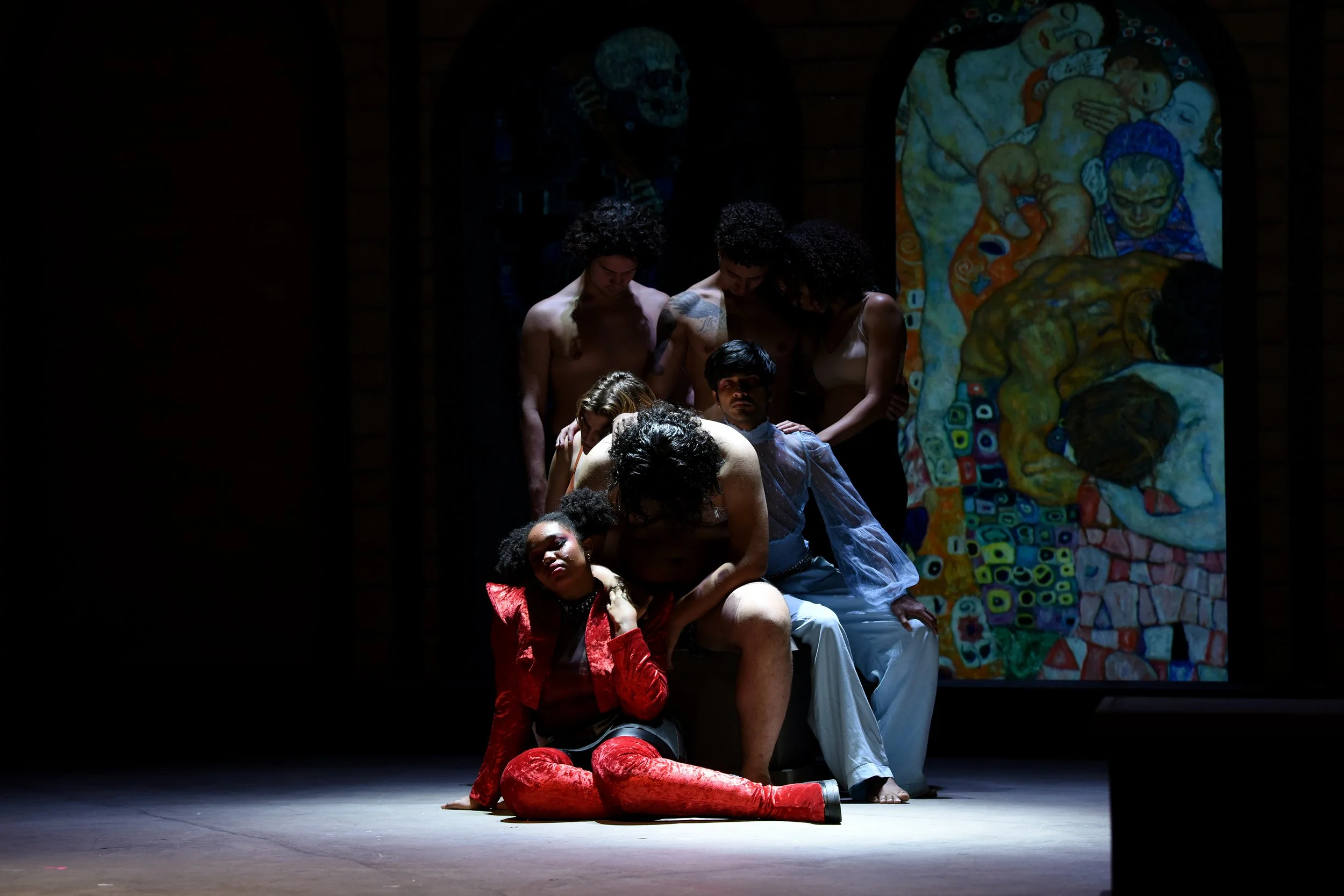Everybody
Arizona State University 2021
How have you lived your life and why?
Branden Jacobs-Jenkins prompts us to consider this question in Everybody as we witness Death select an audience member (an actor in disguise) to step into the protagonist’s role as they search for a companion to join them in their journey to die.
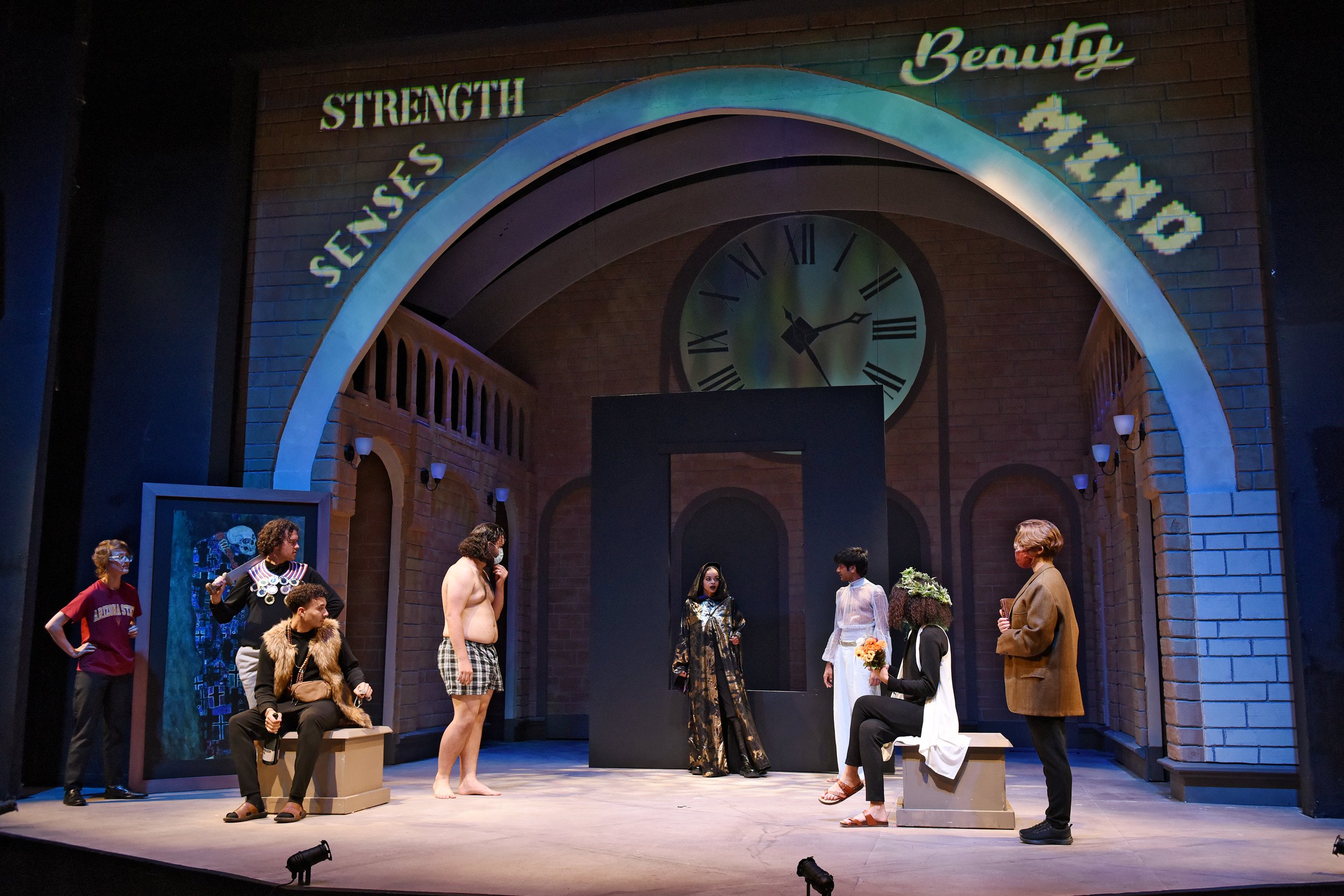
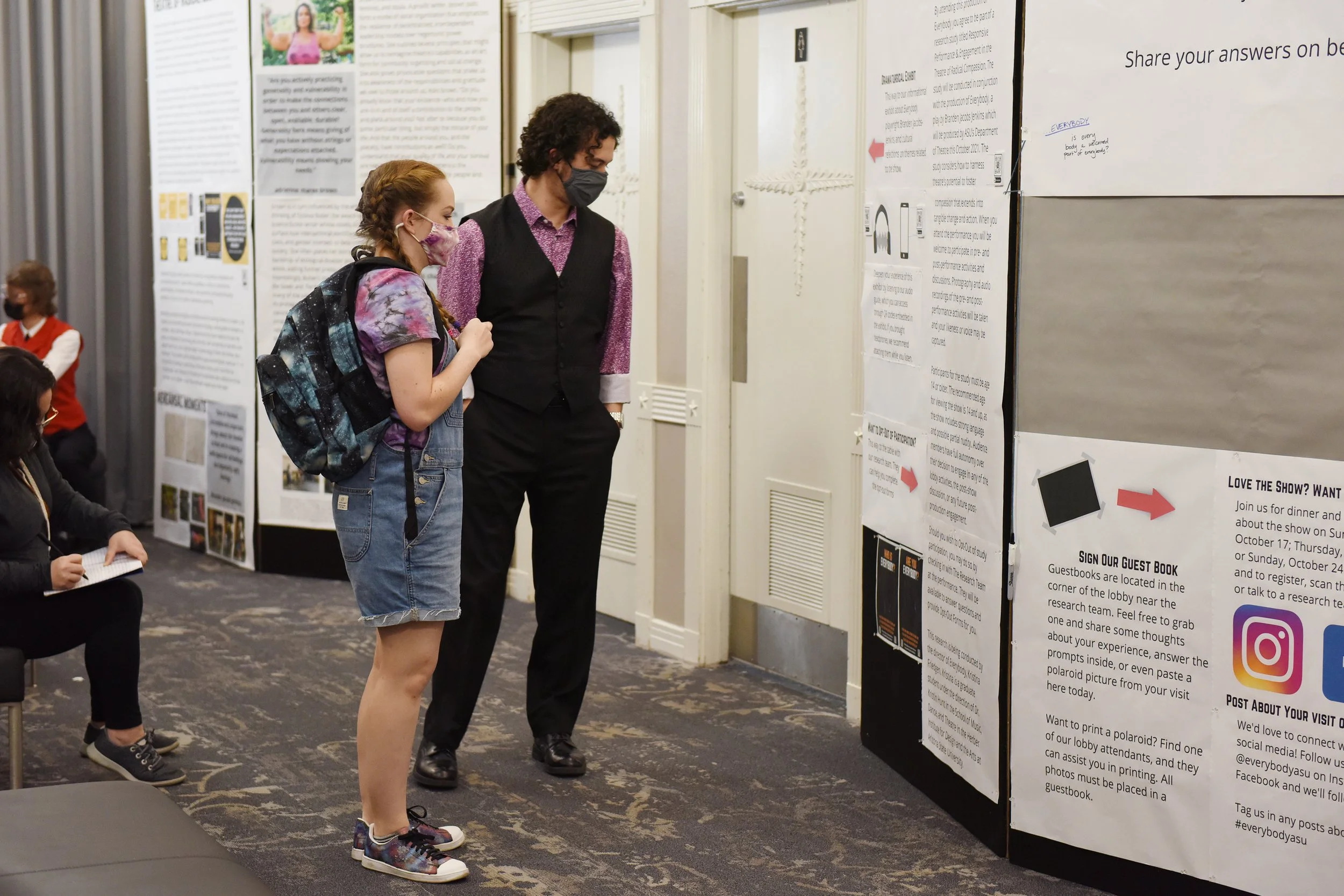



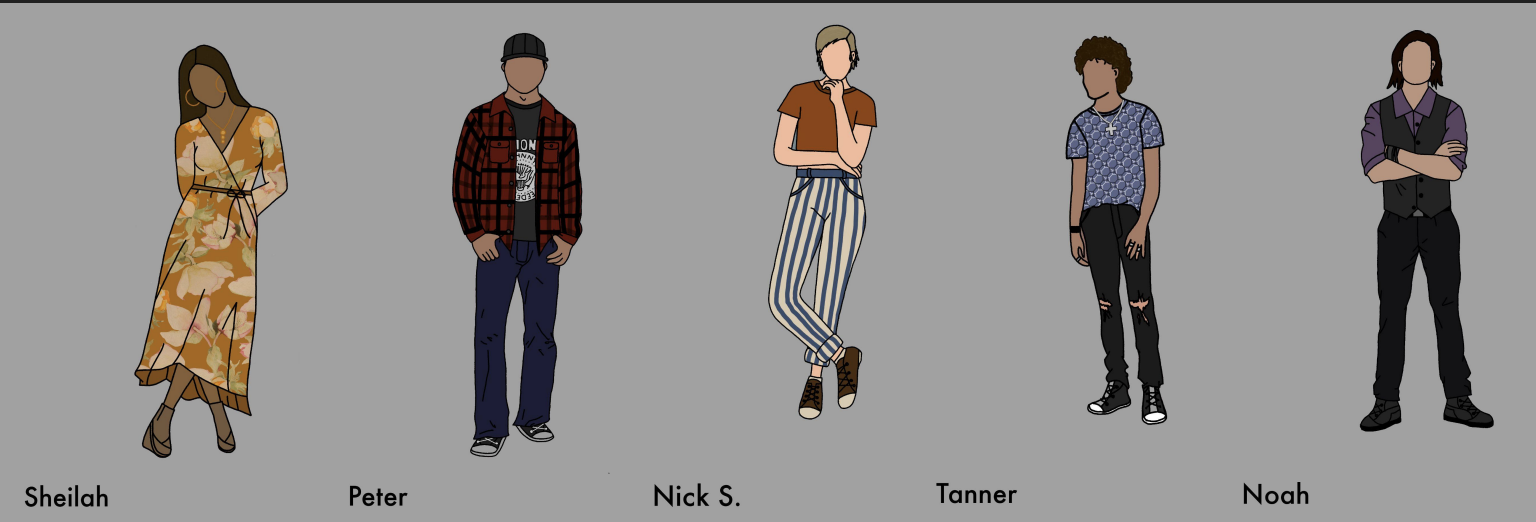



Directorial Concept
In Everybody, Jacobs-Jenkins has adapted the story of Everyman for a contemporary society grappling with life influenced by climate change, racism, capitalism, religion, and identity politics. Throughout his work Jacobs-Jenkins draws from “a range of contemporary and historical theatre genres to engage frankly with complicated issues around identity, family, class, and race” (“Branden Jacobs-Jenkins – MacArthur Foundation” 2016). This authorial mission connects nicely to the aspirations of a Theatre of Radical Compassion, which in part seeks to encourage audiences to engage different levels of empathy during a spectating experience in order that they might develop motivation to act on that empathy. While each of Jacobs-Jenkins’ plays prompts the audience to consider the trajectory of modern American society through a historical-political lens, Everybody brings this conversation beyond the fourth wall by continually breaking the action onstage, bringing up characters from the audience, and even addressing the audience directly at several points of the play.
Jacobs-Jenkins intentionally structures the action of Everybody in relationship to the audience. From its first moments, the play asks the audience to actively participate as the Usher directs them to “clap if you can hear me” (2018, 7). Shortly thereafter God addresses the audience as a collective and delivers the central objective to literally everybody present. Within this speech, God presents questions that encourage the audience to preview a journey up the Compassion Staircase. By laying a judgment of everybody directly on the audience (“How can it be that of all my productions it is you who have deteriorated so severely and into such disappointment”), the audience naturally has the opportunity to empathetically experience God’s disappointment. However, God does not allow the [community] to wallow. Instead, he encourages them to listen to “the remainder of my creation . . . crying out for justice against you” (2017: 13). This question can begin to prompt an audience to critically reflect on examples from their own experiences. Finally, God commands Everybody to “make an accounting” of how they lived their life. While one individual will play Everybody in this quest, the structure of the play strongly encourages the audience to perform an internal simultaneous dramaturgy in tandem with Everybody’s journey through the play. As they go through this process, the audience will continuously encounter the two thematic questions which God presents here: What injustices do you hear Creation crying out against? and What are you doing to address it?
Excerpt from Everybody analyzing the ways in which the central thesis of the play can impact different levels of empathy.
As a note, I make use of Boal’s idea of “simultaneous dramaturgy” in a slightly different way than Boal intended. In Theatre of the Oppressed, simultaneous dramaturgy refers to the actions of the audience in a Forum Theatre setting in which a spectator could propose a solution for actors or spect-actors to play out onstage. This form of spect-acting is not possible within the bounds of Everybody. However, because the first 22 pages of the play are addressed to the audience and characters planted within the audience, the fourth wall becomes permeable. In this way, Everybody creates the sense that everyone present at the play could become the protagonist Everybody. This quality could prompt a form of internal simultaneous dramaturgy, in which the spectator reflects upon Everybody’s interactions with other characters and his/her/their journey toward death in a way that invites the spectator to propose alternative tactics of their own.
In applying a Theatre of Radical Compassion approach to my direction of Everybody, I sought to examine through our design and production elements how we craft the sensation of theatrical connection or distance for our audience. I wanted the audience to understand themselves as potential Somebodies – characters who could be chosen at random by Death to participate in the play. In order to achieve this, I directed our designers to find a balance between the specificity of settings or costumes that evoked a common understanding of place, while staying malleable enough for the audience to read their own life experience onto the play. We ultimately achieved this by setting the play in an art gallery and by building the character’s costumes from the actor’s personal styles.
